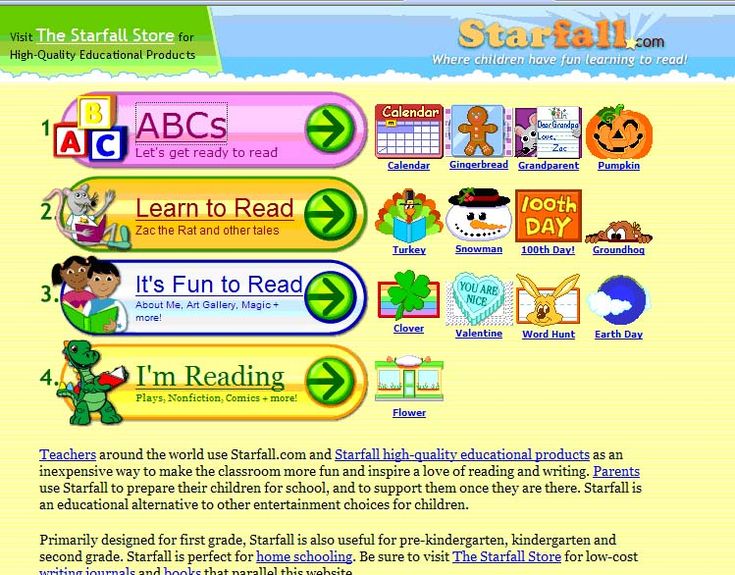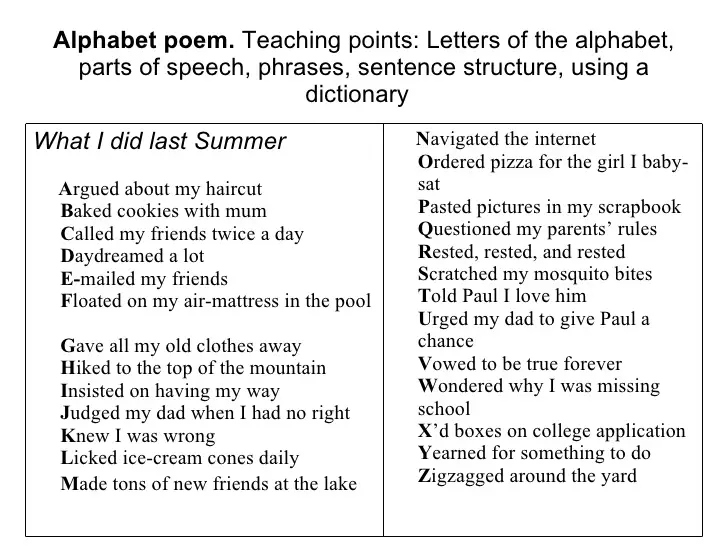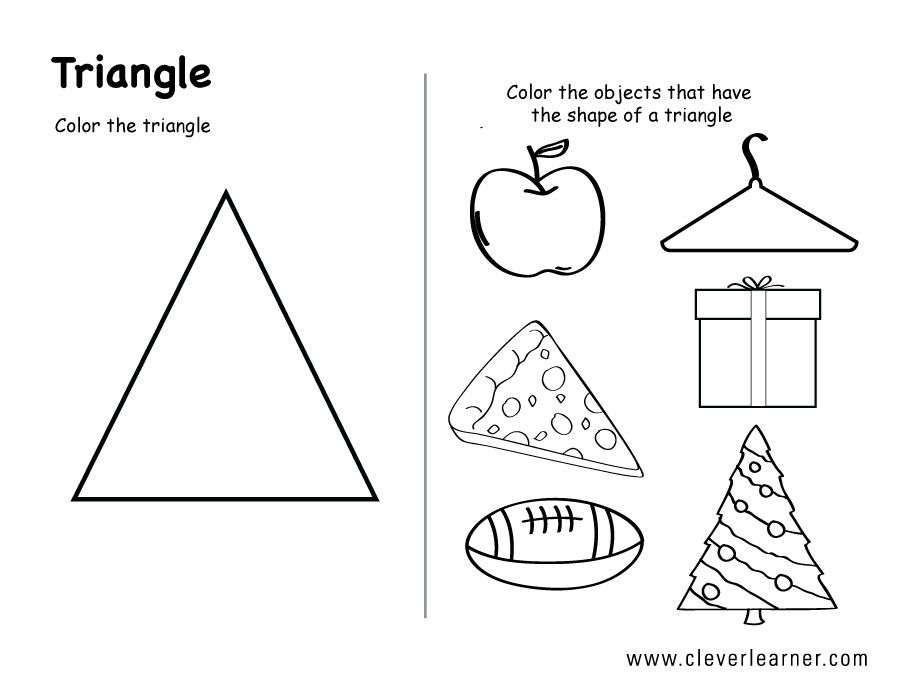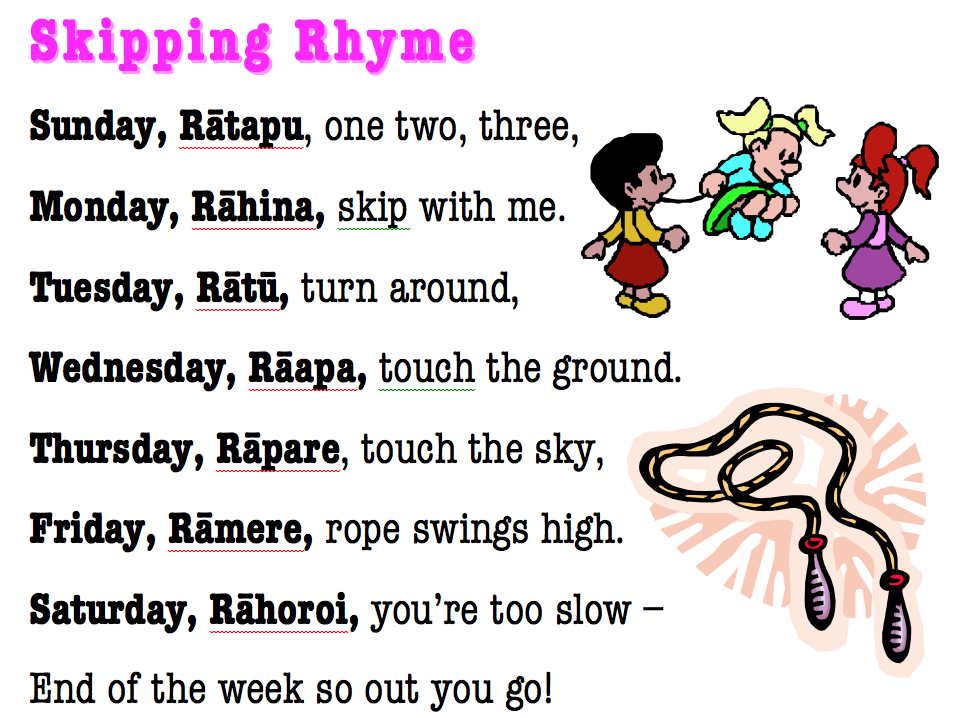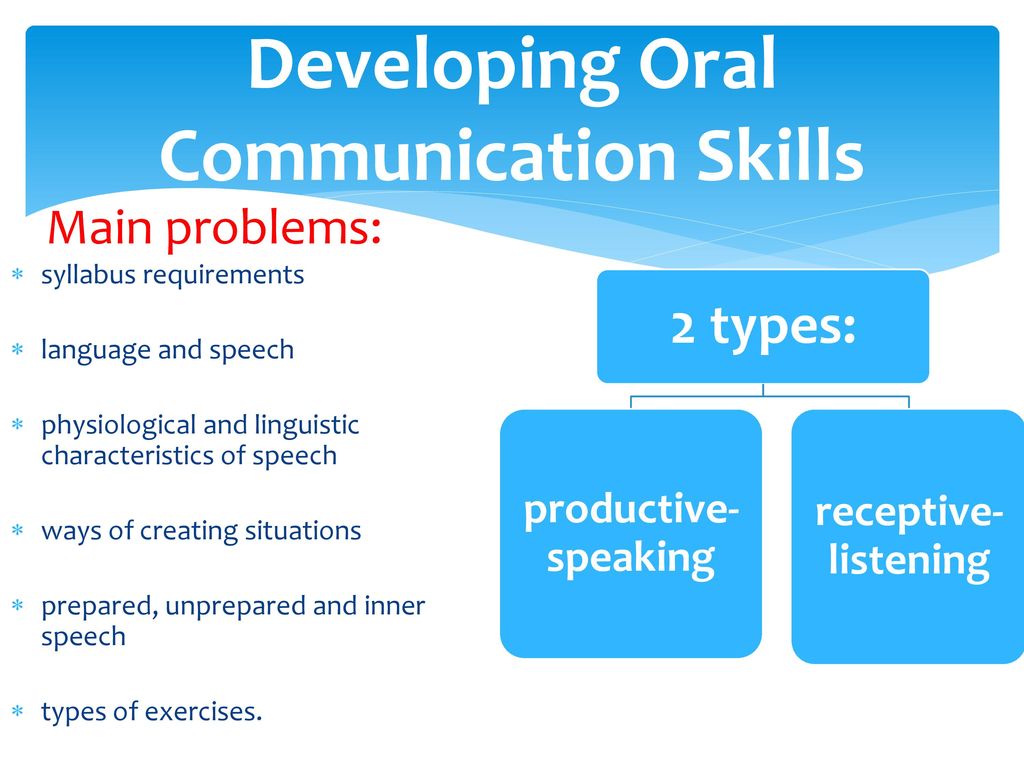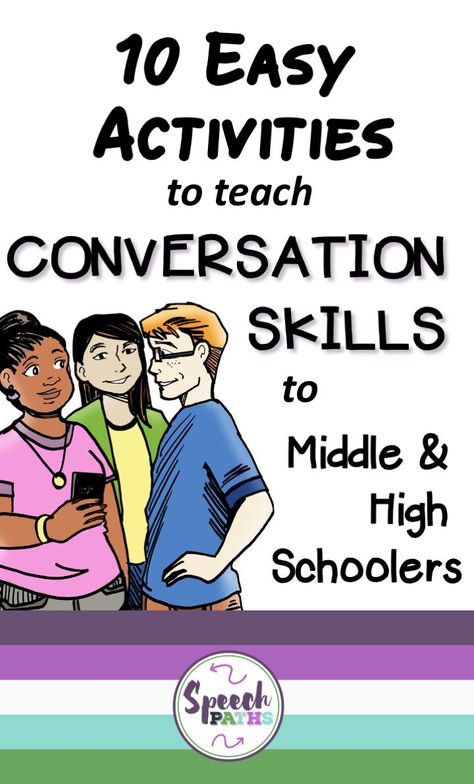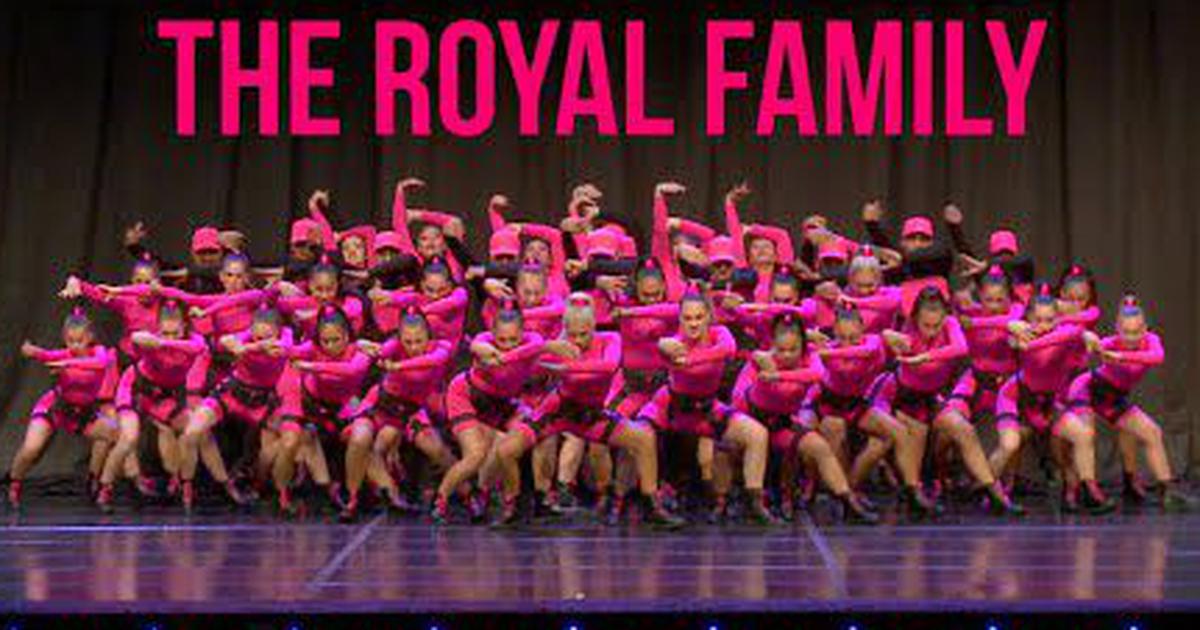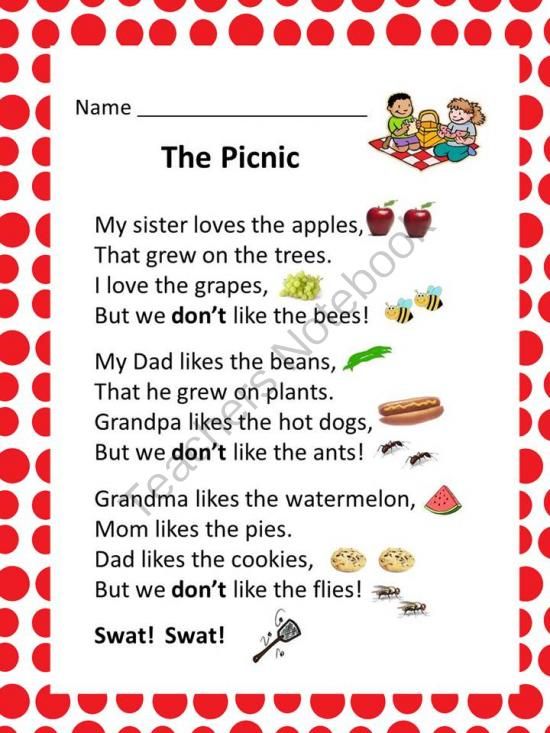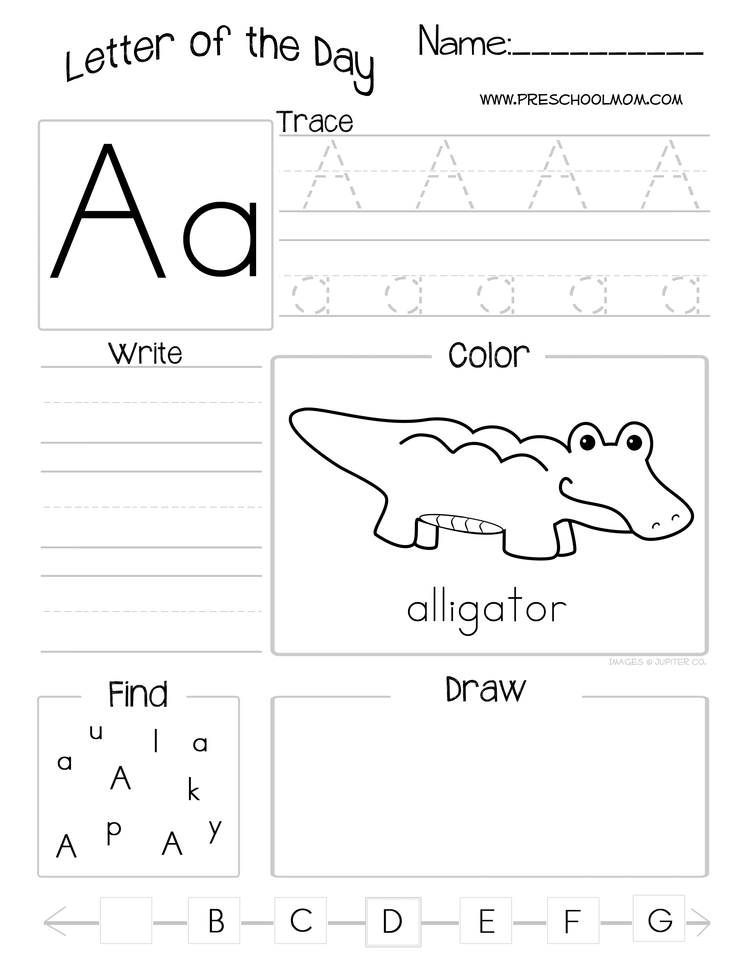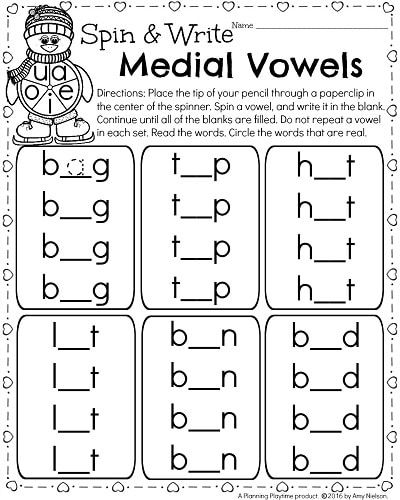Number sense for preschool
The Ultimate Guide to Number Sense
Welcome to all things number sense. From recognizing numbers to ordering and comparing. Essential math information for teaching preschool math and beyond!
Number sense is a broad term that refers to a group or set of skills that are needed to perform basic math operations.
You might think that number sense is just simple counting and that young children will master number sense quickly. However, number sense refers to deep understanding of HOW numbers work. It will take some time for young children to master these skills!
Number sense is the critical foundation that ensures that students will be successful in mathematics for years down the road. It lines them up for success in addition and subtraction and understanding how these operations are related. In a nutshell, it is a critical part of preschool and kindergarten math development.
Number Sense Skills Include:
- Rote Counting (naming numbers in order)
- Number Recognition (recognizing numbers in print)
- Counting with One to One Correspondence (each number has a constant value)
- Comparing Quantities (understanding the concept of more/less/same)
- Cardinality of Number (recognizing that the last number said when counting is the number of total objects)
- Conservation of Number (understanding that the number of objects is always the same even when rearranged)
- Subitizing (the ability to recognize “how many” in a set without counting individually)
Let’s dive in! We’ll tell you a little more about each number sense skill, and give activities to practice it.
Plus, grab our free counting mats to get started on these skills right away!
Number Sense Skill: Rote Counting
Rote counting is like dipping the toe into the number sense pool. Young children begin rote-counting (with mistakes) at an early age, often around 2 years old.
To rote count is to count verbally in sequential order. Children mimic the pattern of numbers that they have heard, without understanding number value or quantity. Once children have mastered rote counting skills, they are able to progress to tagging – which is the prerequisite for one to one correspondence.
Rote Counting Activities
Rote counting is a breeze to practice – the important part is to make it fun and exciting! There are many fun, simple rote counting activities that can be added to your preschool math plans.
- Invite young children to count along with you using different voices (soft, loud, silly, grumbly, etc.).
- Sing along with counting songs like 5 Little Speckled Frogs and One, Two, Buckle My Shoe.
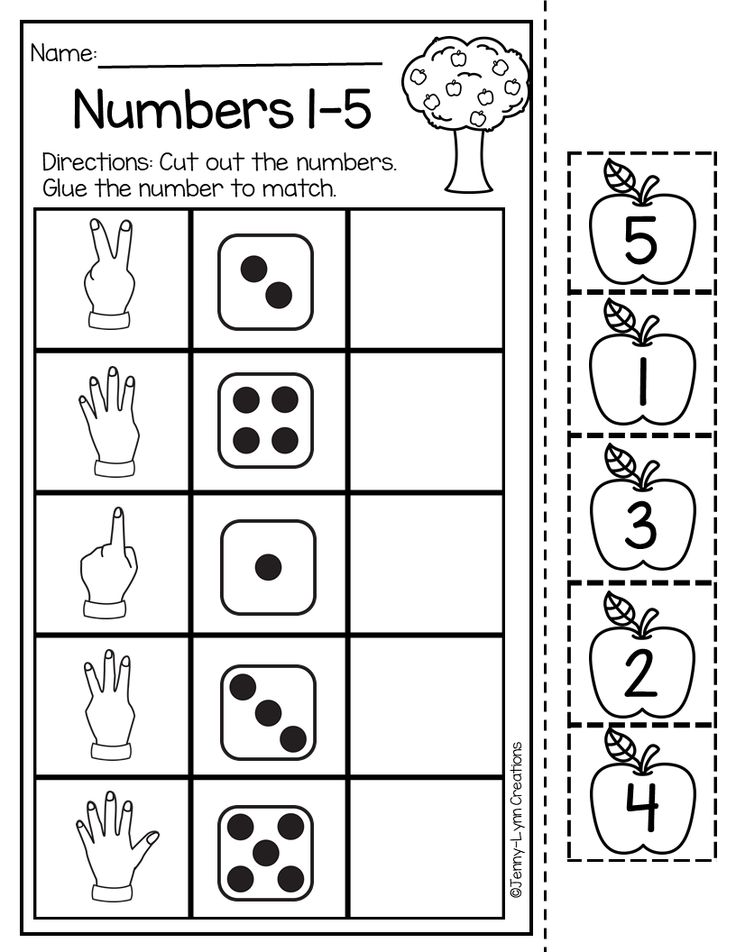 You’ll find plenty of counting songs in our list of songs that teach.
You’ll find plenty of counting songs in our list of songs that teach. - Move and count! Incorporate counting as you clap, dance, jump, and hop.
- Use a puppet or stuffed animal to practice rote counting. Play a game that when the puppet gets to 10 it has to dance and start all over again!
Number Sense Skill: Number Recognition
Number identification is the ability to recognize a number in print and verbalize or write it. “At its most basic level, numeral identification is a form of shape recognition, which can result in a simple association of the word “two” with the symbol ‘2’ without a cardinal meaning” (Mix, Sandhofer, & Baroody, 2005). This means number recognition can develop at a different time than number value.
Number Recognition Activities
- Number bingo and number scavenger hunts are all creative and fun ways for young children to practice identifying the numeral.
- Textured numbers – sandpaper numbers and/or glitter/salt numbers are a great way to invite children to trace the number’s formation with their index finger.
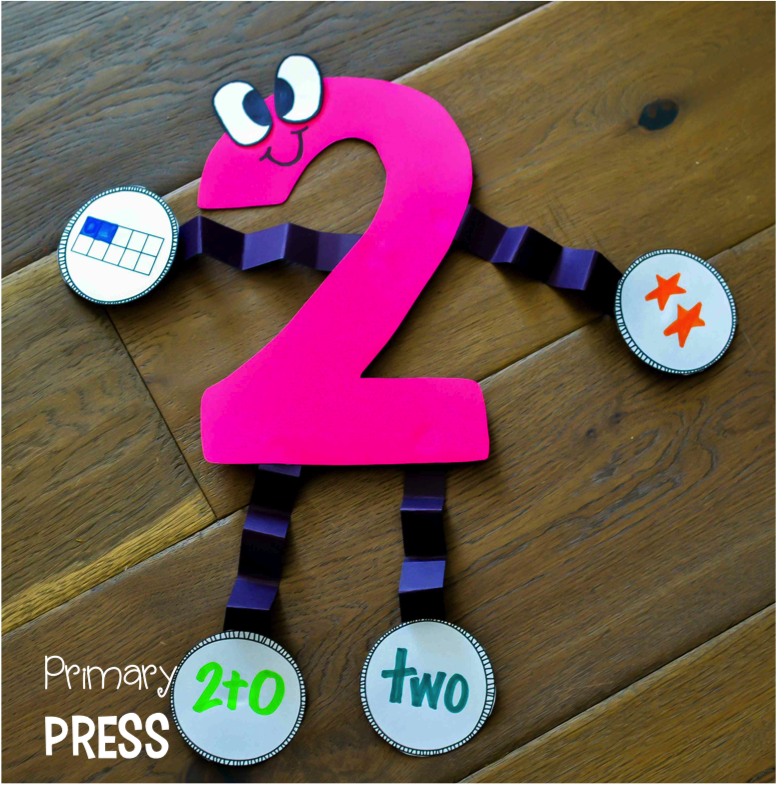
- Using playdough snakes to form numbers is a great way to practice learning and making numbers!
- Stamping numbers is a kid favorite for practicing number recognition
- Give numbers a purpose – teach your students their phone number!
Number Sense Skill: One to One Correspondence
During the tagging stage, children will begin assigning numbers to objects. The numbers will be often out of order or random during this phase. For example, a student who has 6 apples placed in front of him may say, “1, 2, 4, 7, 8. There are 8 apples!” This student is making the connection that we use numbers to count objects, but his number sense is still too immature to understand that each number has a value. Tagging precedes one to one correspondence and children may not physically touch or attempt to manipulate the items, rather they just “count” by observation, which often results in incorrect counting or accidental re-counting.
During the one to one correspondence stage, children begin to understand the rule of counting.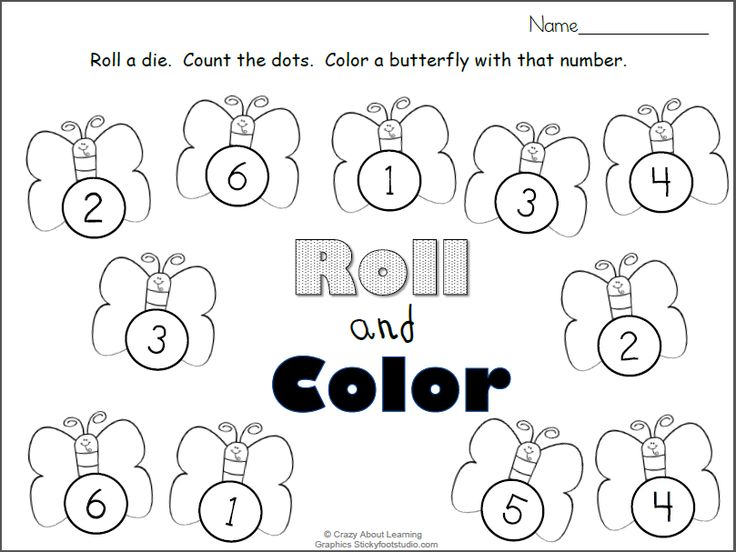 It’s the rule that each number translates to a specific quantity AND recognizes that numbers are a symbol to show a quantity. The student in the tagging example above has now begun to use correct number order to count the 6 apples placed in front of him.
It’s the rule that each number translates to a specific quantity AND recognizes that numbers are a symbol to show a quantity. The student in the tagging example above has now begun to use correct number order to count the 6 apples placed in front of him.
Check out our post about one to one correspondence for even more great information around this critical number sense skill.
One to One Correspondence Activities
- Use ten frame mats to help children count accurately. Show the child how to count to the desired number by slowly touching each object. Then, have the child do it after you so that you can assess any areas that they might need help with, whether it’s counting or following their finger. Check out our free dinosaur ten frame mats!
- Use counting at every natural opportunity. Count the grapes on your plate, count the butterflies in the book, and count the school buses in the parking lot.
- Use dice to help count out coins, pasta, stuffed animals, or books.
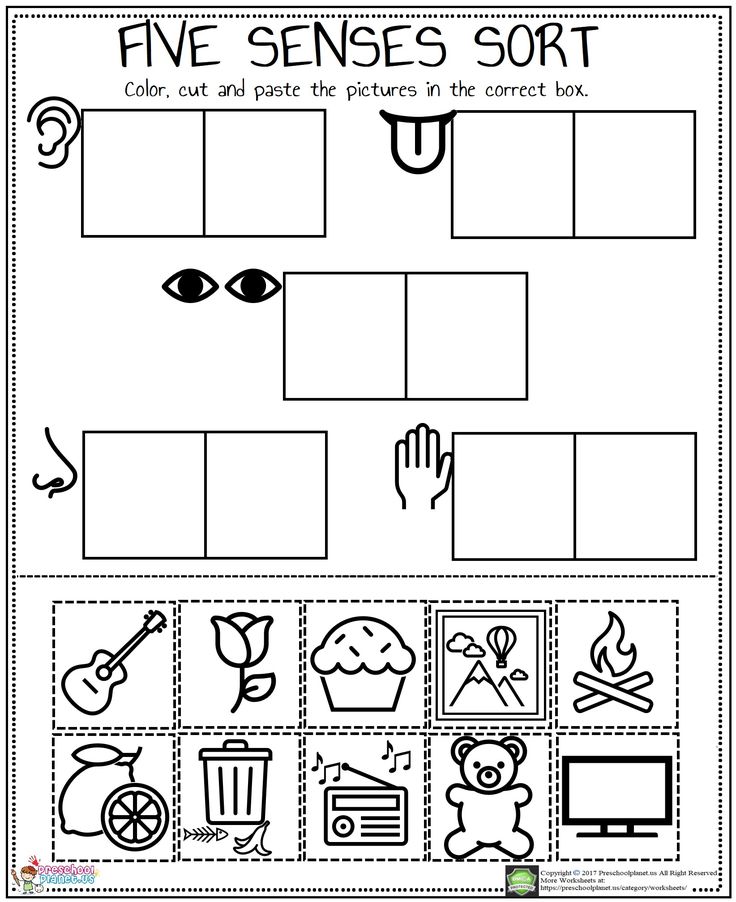 Incorporate dice into an easy scavenger hunt at home or school. The options are endless!
Incorporate dice into an easy scavenger hunt at home or school. The options are endless!
We’ve got a set of counting cards in our store specifically to help with one to one correspondence! Each theme has a card with numbers 1-24. Switch out the seasonal counting cards to keep children’s interests and to follow along with your theme. These make a wonderful addition to your preschool and kindergarten math centers!
Number Sense Skill: Comparing Quantities
Learning to compare quantities helps preschoolers make sense of the relationships between numbers: three is one more than two, but it is one less than four. Most preschoolers naturally understand the concept of more or less, as they can quickly tell you if someone got more cookies than them!
Since many preschoolers understand more and less in a general sense, learning to compare with small numbers is a great place to start.
Comparing Quantities Activities
- Use a foam number puzzle as a creative way to count gems using one to one correspondence, and then compare the amounts in each number.

- Line up a small number of objects, perhaps 4 cars. Then line up 5 cars directly below each of the 4 cars. Ask children which row has more cars. Encourage them to share how they know. Use this same activity for less and same quantities.
- With connecting cubes, Legos, or building blocks invite the child to build two towers. Invite the children to make one tower more/less/or the same as another.
- Use real-life examples of more/less/same as they arise. Call attention to the two students who are wearing red and the four students who are wearing green. Invite the students to notice other ways to compare.
Number Sense Skill: Cardinality
Cardinality is recognizing that the last number said when counting is the number of total objects in the group. It’s the ability to count each object individually and correctly declare the total number of items in a set. This is the final and BIG step in one to one correspondence! During this stage, students may also begin to see patterns, such as five-frames and begin to know the total number of objects without counting (also known as subitizing).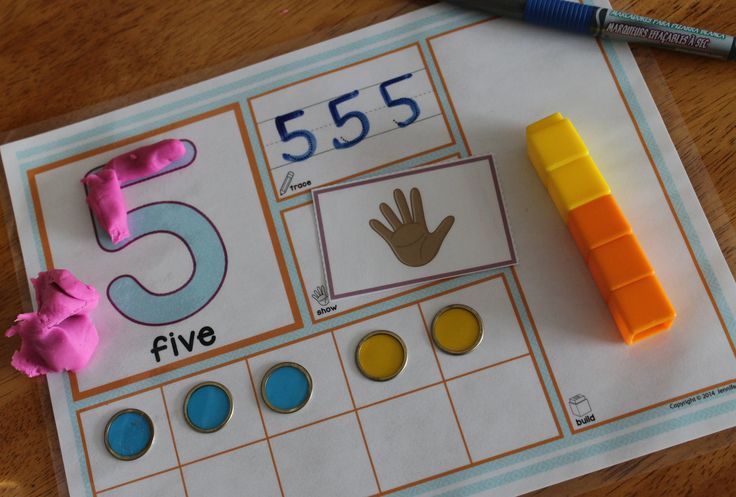
Cardinality Activities
- Encourage children to be helpful! Invite them to count out items (snack, blocks, crayons, etc.) to share with other children.
- Invite children to count everything! Count the pencils on the table, the windows in the house, or the trucks in the sand box. Reinforce the total number of objects by confirming the child’s count. For example, “Yes, Maya! There are 5 trucks in the sandbox today. The total number is 5 trucks.”
Number Sense Skill: Conservation of Number
This important component of number sense is one that takes time for young children to master. Conservation of number shows that the child is able to understand that a number of objects remains the same even when rearranged, therefore there is no need to recount.
For example, Billy counted out 7 red fire trucks and declared the total proudly. You then moved the fire trucks all around and rearranged them and asked Billy, “How many fire trucks are there now?” If Billy recounts them each time the question is asked, he is still working on conservation of number and needs more time to conceptualize the value of numbers.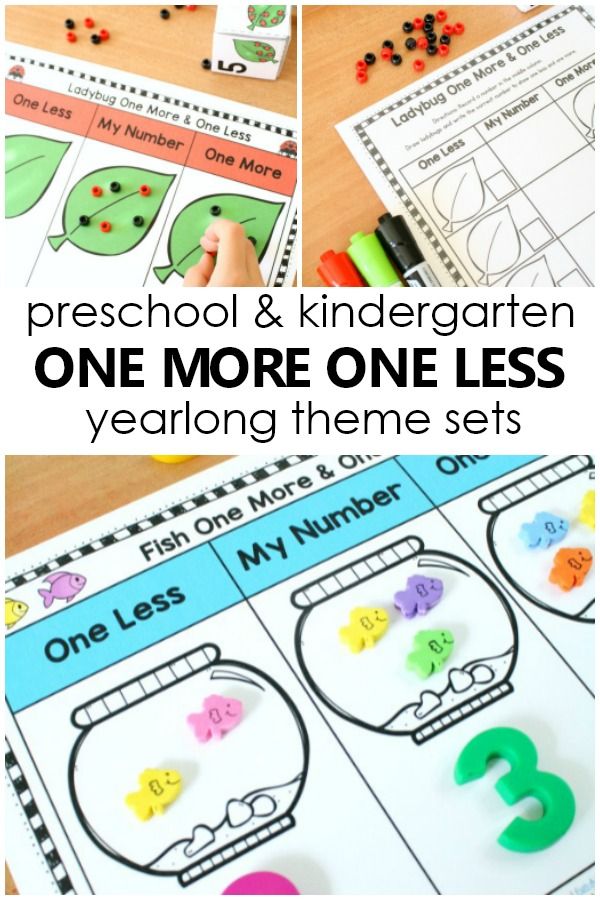 Repeated practice with this concept is crucial in preschool math.
Repeated practice with this concept is crucial in preschool math.
Conservation of Number Activities
- Invite a child to join you in a counting game. Place six items on the table and ask the student to count how many total items there are. Once it is counted correctly (if not, work on one to one correspondence), mix up the items and ask the student to share how many there are now.
- If the child needs to recount, tell the student that you did not add any more items and you did not take any items away. If the child continues to recount, model counting the group of items in lots of configurations and stating that it’s always 6 because I didn’t add any items or take any away.
- Invite one child to count 5 objects into a box. After counting the 5 objects, ask the child to tell you how many are inside the box. If needed, remind them that the number they put inside is still 5 because they did not add or take away any objects. Repeat with other numbers.
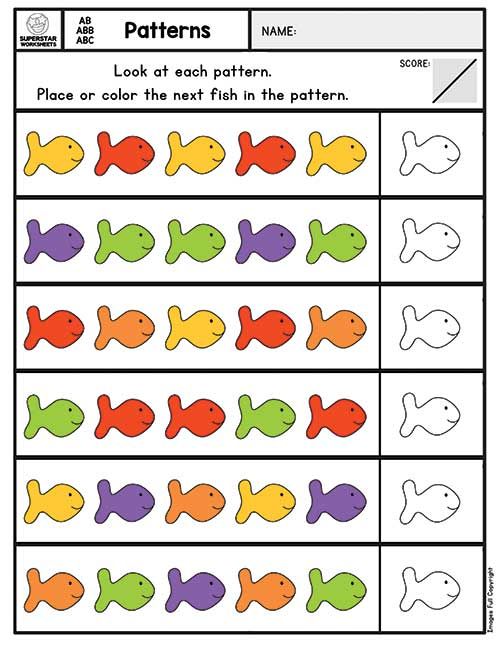
- Show multiple children a numeral, perhaps 4. Invite them to hunt the room and find 4 of the same items (crayons, books, blocks, counters, etc.). Invite the children to bring back the 4 items they found and share and count the items with their peers. Encourage them to discuss why some sets of the same number of objects look different.
Number Sense Skill: Subitizing
Subitizing is the ability to recognize “how many” in a set without counting individually. It’s the ability to know the number by “sight”. It’s also an ideal way to introduce simple addition and subtraction. Use dot cards, tally marks, fingers, and ten frames to help your littles becoming subitizing masters! Subitizing practice is a vital part of your preschool and kindergarten math curriculums.
For even more subitizing tips, tricks, and insight, check out our Subitizing 101 post!
Subitizing Activities
- Use music, movement, and Jack Hartmann to teach subitizing! These engaging videos, Subitize to 5 and Subitize to 10 are a great way to get some quick and fun subitizing practice.
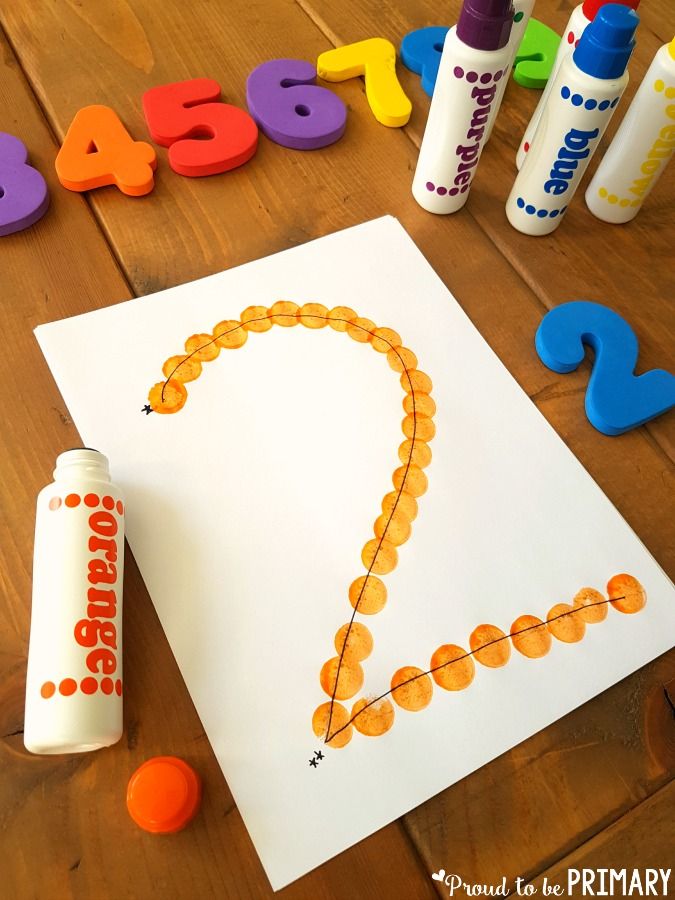
- Subitize with dot cards, dice, or dominoes. Hold one up to the class for a few seconds and then ask the students to share how many they saw. Help students see the pattern inside the dots. For example, a 4 on a dice shows 2 rows of 2 which equals 4.
- Subitize with fingers! Hold up 3 fingers and ask students to share how many without counting. Then ask the children to model showing three fingers on their hand.
We hope this introduction to all things number sense has given you loads of ideas for your students and helped you feel more confident when teaching preschool and kindergarten math! Incorporate a variety of these activities into your lessons and watch the light bulbs illuminate in your little ones’ brains. Keep it fun, hands-on, and engaging and their number sense is sure to flourish.
- Author
- Recent Posts
Lauren Vaughan
I am an educator, book enthusiast, and a stay at home momma to a precious and long-awaited little boy and girl.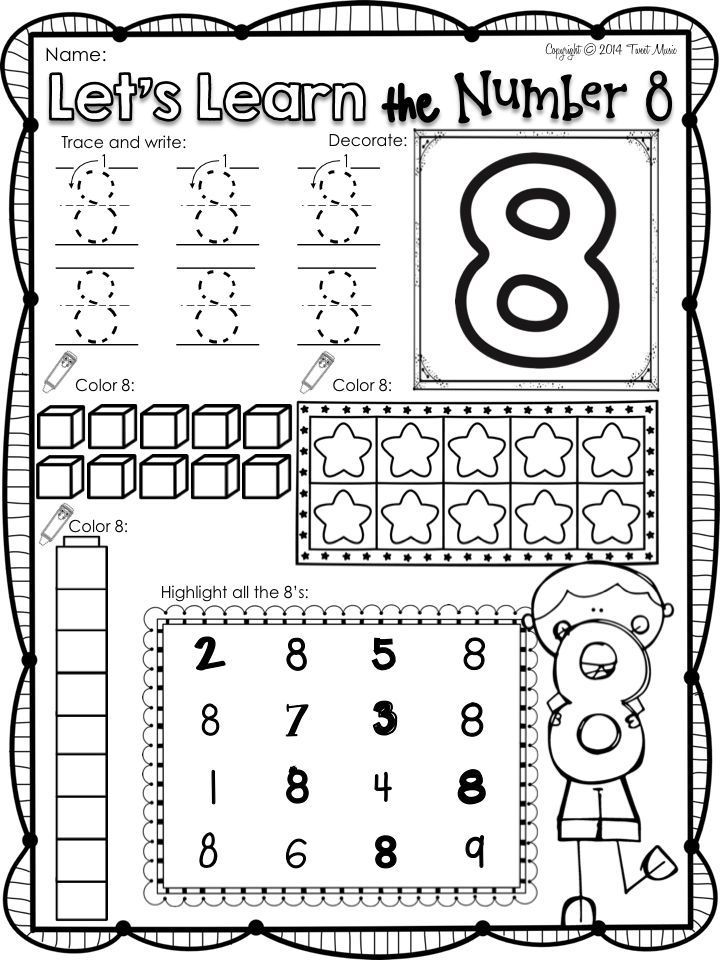 My degree is in Early Childhood Education and Curriculum and Instruction and I have spent the last 15 years working with littles. I feel very fortunate to have this time to watch my babies grow and I can’t wait to share my passion for learning and reading with you!
My degree is in Early Childhood Education and Curriculum and Instruction and I have spent the last 15 years working with littles. I feel very fortunate to have this time to watch my babies grow and I can’t wait to share my passion for learning and reading with you!
Latest posts by Lauren Vaughan (see all)
Teaching Number Sense in Preschool
Whether at home or at school, naming numbers and counting has been at the core of preschool mathematics. It is the beginning of developing number sense. Giving your preschoolers the tools they need to succeed in math is essential, and this is your ultimate guide to teaching number sense in preschool!
What You Need to Know About Teaching Number Sense in Preschool
Developing number sense skills in preschool is a priority for teachers and parents.Teaching number sense in preschool takes careful planning, and this is your ultimate guide to becoming a successful parent-teacher in teaching number sense to your preschooler.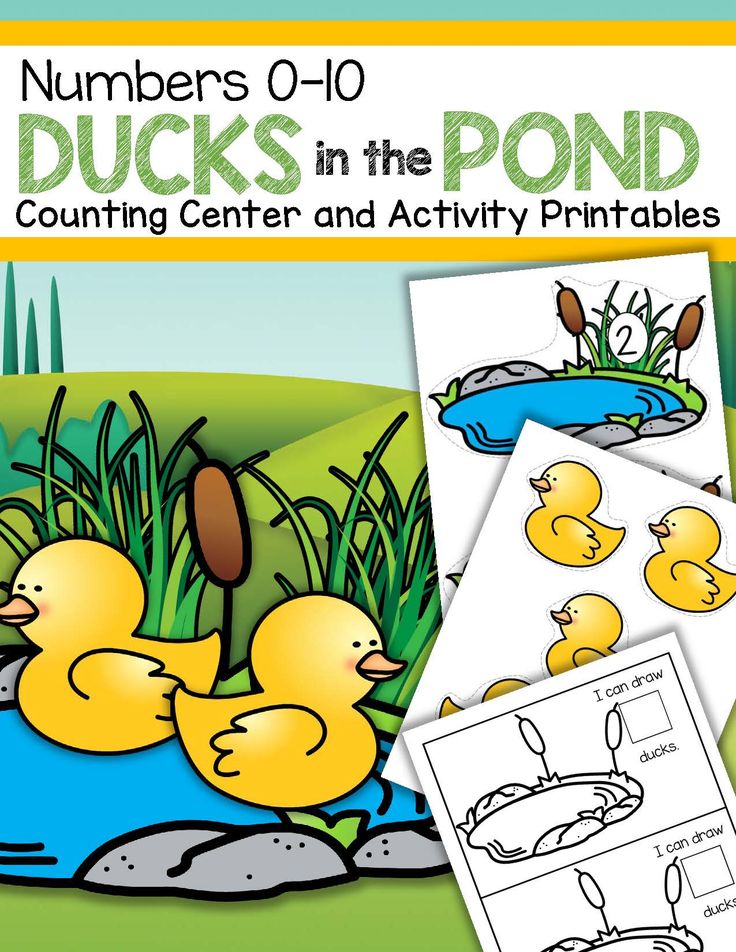
Because giving your preschooler a solid foundation in number sense it is more than just naming numbers and counting.
What is Number Sense?
Number sense encompasses a broad understanding of the concept of numbers. It refers to a child’s fluidity in numbers, including:
- quantification (knowledge of specific quantities)
- number identification (naming numbers)
- number order and sequencing
- counting with one-to-one correspondence (each number corresponds to one specific quantity)
- cardinality of number (recognizing that the last number said when counting is the number of total objects)
- conservation of number (understanding that the number of objects is always the same even when rearranged)
- subitizing (automatic recognition of set quantities)
- composing numbers (addition)
- decomposing numbers (subtraction)
- understanding of mathematical symbols ( +, -, ÷, x, = )
Whew! That’s a lot!
This child is practicing number identification!
While not all the above are developmentally appropriate for preschoolers, they are all interlinking under the mathematical discipline of number sense.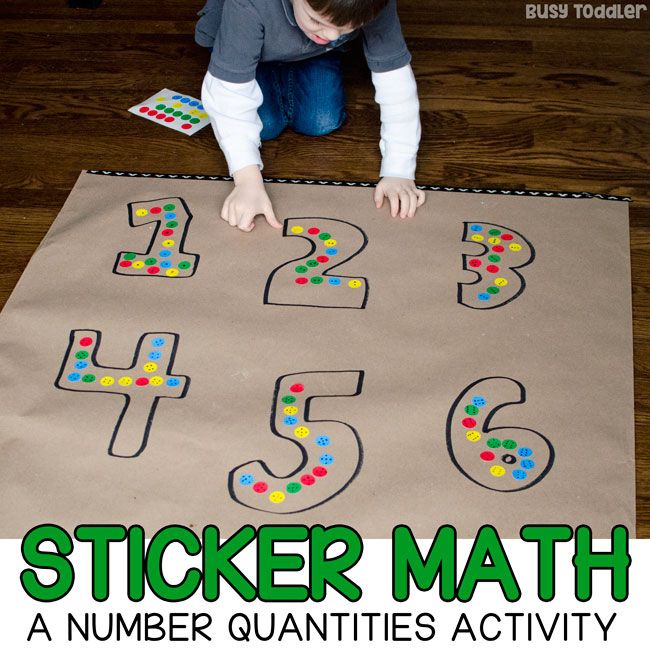
And since many researchers agree that a strong foundation in number sense directly relates to a child’s overall success in math, teaching number sense to preschoolers is a bigger task than some might initially think.
Number sense refers to the understanding of how numbers work, not just simple counting. It will take some time for children to master these important skills.
Number Sense is Really Important, and Here is Why
Number sense is the key to successful math skills for children.
It’s a Strong Indicator of Mathematical Achievement.
Number sense skills in the early years is a strong indicator of overall mathematics achievement. Early childhood educators have the important responsibility of constructing the foundational mathematical knowledge and skills that preschoolers will need for future learning in math. And while this is true for all children, it is especially true of children who come from low socioeconomic backgrounds.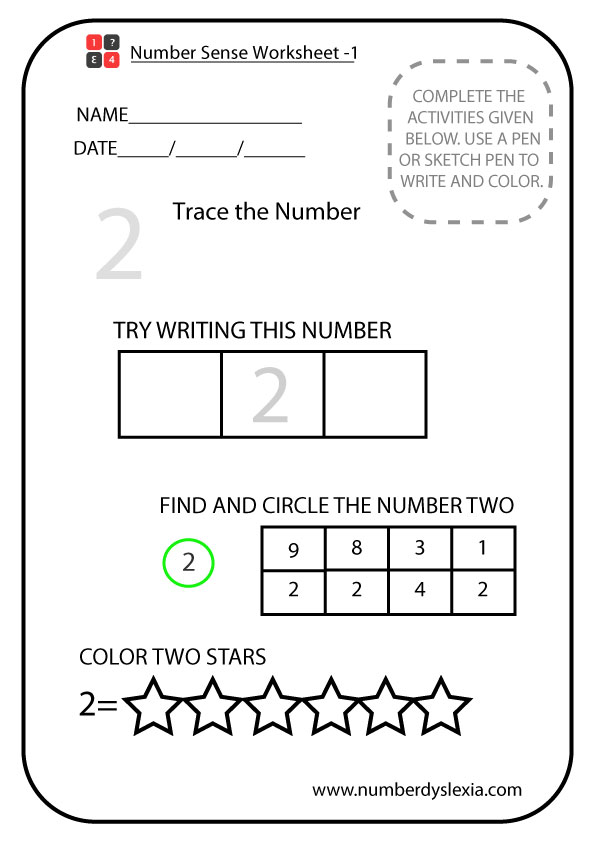 (Source: Teaching Mathematics in Early Childhood)
(Source: Teaching Mathematics in Early Childhood)
It Shows How Mathematics is Systematic and Consistent.
A strong foundation in number sense also teaches children to be flexible in their problem solving. In this, children learn that numbers are meaningful and despite manipulation, their outcomes are constant and sensible. (Source: Teaching Preschool and Kindergarten Math) On the other hand, children who lack in number sense skills have difficulty performing even the most basic mathematical algorithms.
Math Simply Cannot Happen Without It.
Remember that number sense includes a gripping understanding of HOW numbers work. Not only does this ensure preschoolers will be able use addition and subtraction in years down the road, as well understanding how these operations are related with each other, but number sense plays a supporting role in all math disciplines.
In short, it’s a critical part of preschoolers’ early education that sets them up right from day one.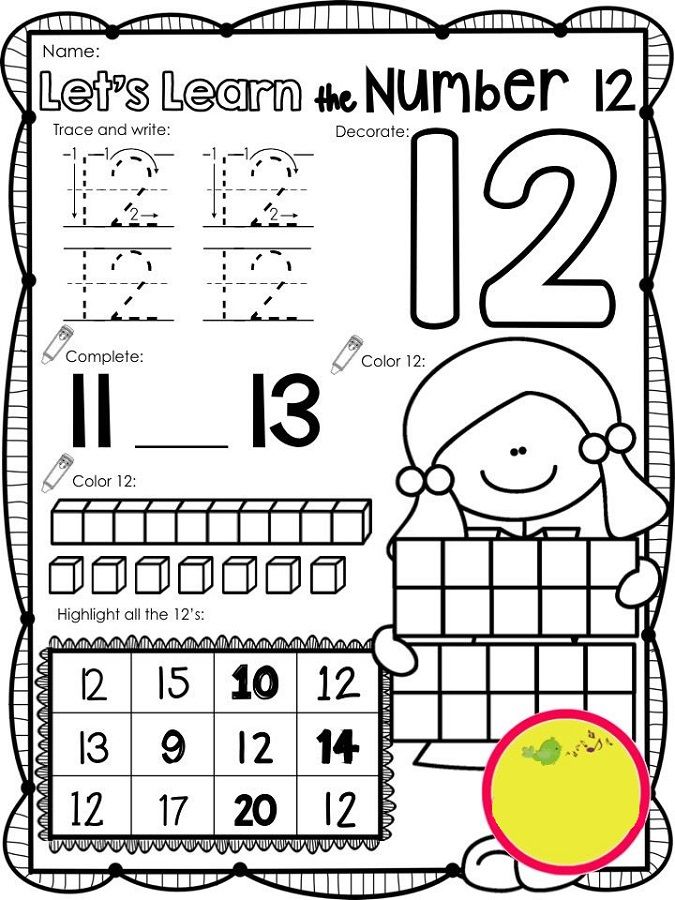
How to Teach Number Sense in Preschool
While developing number sense has a broad scope, there are many preschool math activities that teach a range of number sense skills. When taught deliberately and frequently, children coming from preschool programs who consistently teach these components are better prepared for learning more complex math.
Let’s dive in to each skill set in number sense!
Number Sense Skill – Quantification
Quantification is the ability to recognize that all numbers are associated with an exact quantity, and the ability to recognize sets of objects, such as pips on a dice. This is sometimes referred to as subitizing.
Subitizing is the ability to automatically recognize quantities without counting. It’s like sight reading sets of objects. Here are some real-life examples:
- Shoes come in pairs
- Pipes on a dice
- Cupcakes in a box or on a tray
- Recognizing tally points
- Wheels on a tricycle
- Animal feet on quadrapeds
These are all examples of how quantification, or subitizing, is used in real life.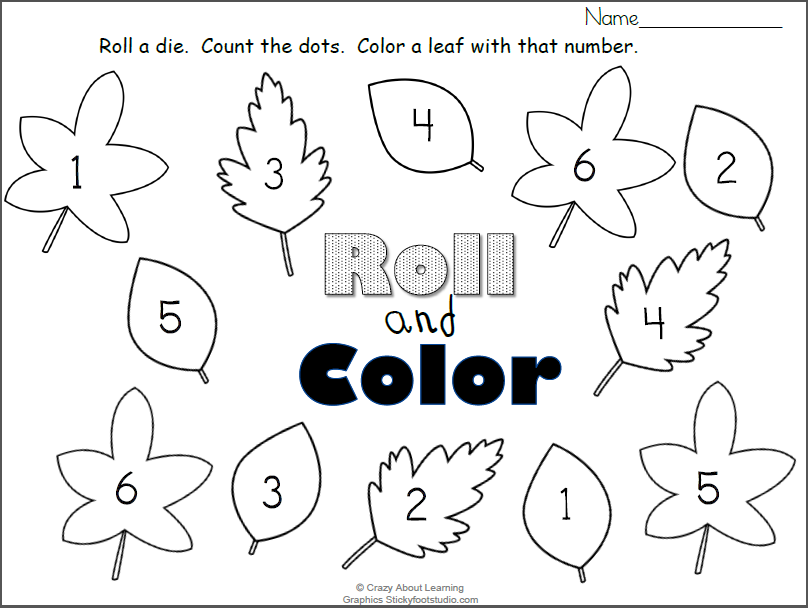 In a way, it is recognizing patterns in sets.
In a way, it is recognizing patterns in sets.
Students can use pattern recognition to discover essential properties of numbers, such as conservation and compensation. They can develop such capabilities as unitizing, counting on, and composing and decomposing numbers, as well as their understanding of arithmetic and place value—all valuable components of number sense.
Source
Subtilizing Activities for Preschoolers
Educators, such as Fitzhugh, then realized that while some children could not count the specific units of a number, they could subitize the units making up small sets before them, thus supporting the notion that subitizing is a precursor to counting.
Source
Apple Drop Counting teaches preschoolers about composing ten, as well as subitizing.
Valentine’s Subitizing and Graphing Game is always a crowd pleaser.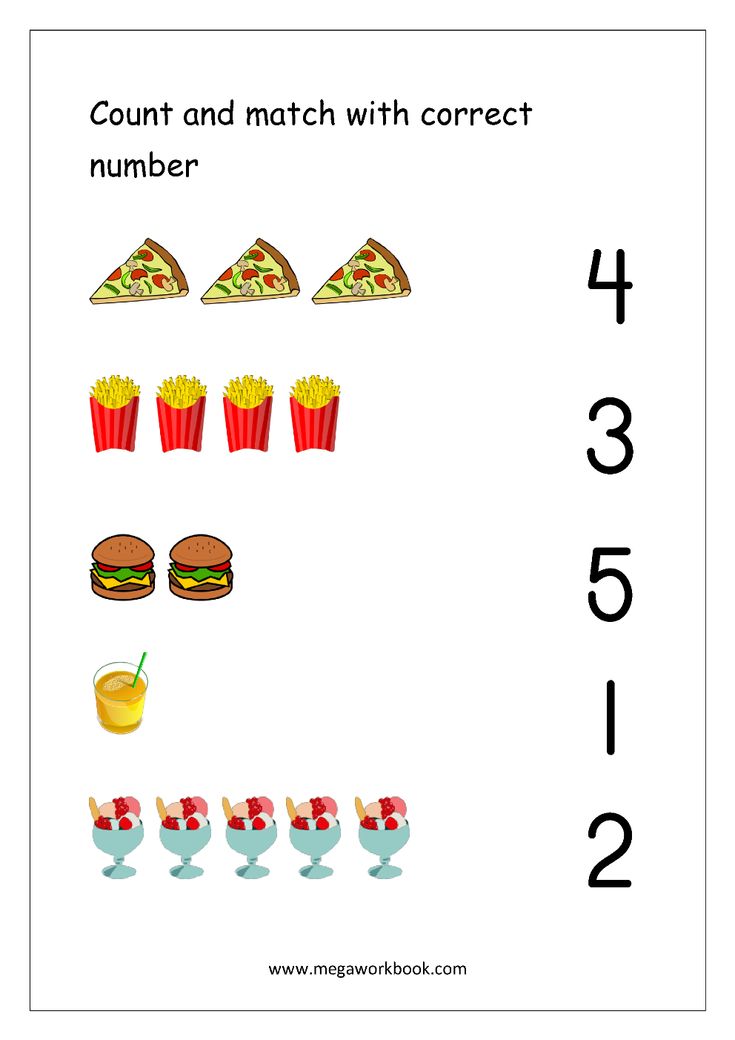 It targets subitizing, but also include skill work in number identification, counting, and graphing.
It targets subitizing, but also include skill work in number identification, counting, and graphing.
This song from Harry Kindergarten teaches subitizing with a fun pirate theme!
Number Sense Skill – Rote Counting
Rote counting is like taking your first steps into the world of numbers. It’s often done as early as 2 years old, and practiced throughout elementary school.
Rote counting in the ability to count out loud in a sequential order. When children are first learning to rote count, they copy patterns they have heard — 1, 2, 3, 4, etc., but do not necessarily attach a value or quantity to the numbers.
Rote Counting Activities for Preschoolers
Rote counting is a cinch to practice because there are so many fun and engaging ways to practice, and they don’t take any prep at all!
- Practice rote counting in different voices and in different places.
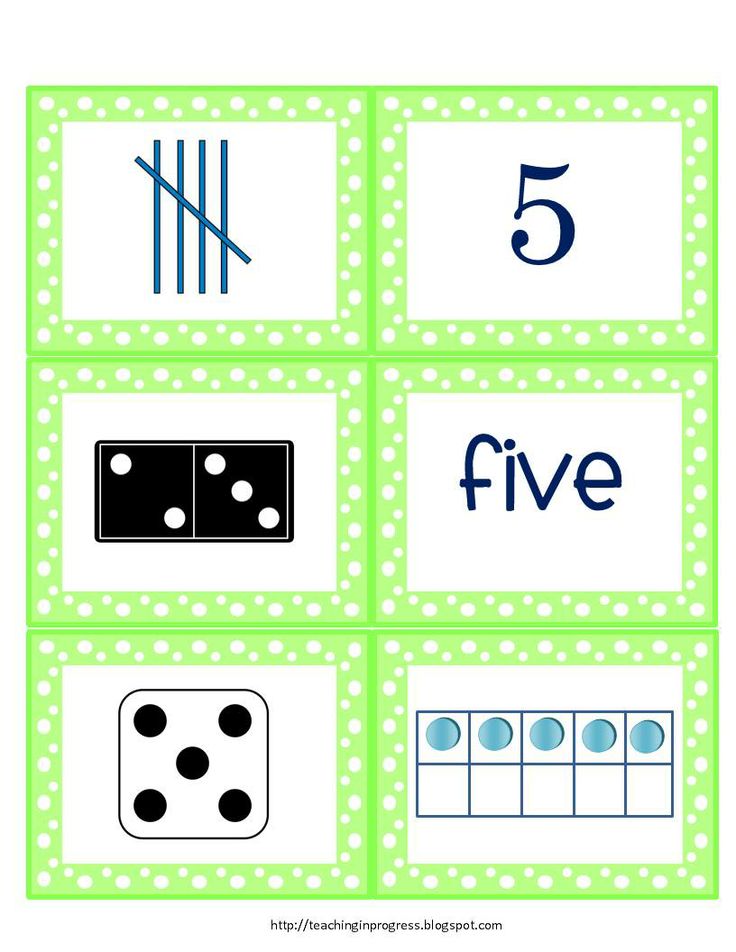 Practice in the car in a silly voice, or on the potty in a grumpy voice, etc.
Practice in the car in a silly voice, or on the potty in a grumpy voice, etc. - Sing nursery rhymes that feature counting or find catchy songs on YourTube. Here is one of our favorites.
Number Sense Skill – Number Representation
Number representation is the ability to identify the number that corresponds with a quantity. This is also called number identification or number recognition. For example, it is the ability to identify that the symbol 6 refers to the word “six” and the same quantity.
“At its most basic level, numeral identification is a form of shape recognition, which can result in a simple association of the word “two” with the symbol ‘2’ without a cardinal meaning”
Source
This means number recognition can develop at a different time than number value.
Number Identification Activities for Preschoolers
Number Sense Skill – One to One Correspondence
Counting is the skill of matching set of objects with their corresponding number name. This is sometimes referred to as one-to-one correspondence, or 1:1 correspondence. It is that ability to count 1, 2, 3, while distinguishing that there are indeed three objects that were counted, no more and no less.
This is critical to building number sense and even mental math skills.
The one to one correspondence stage is the first step in teaching children about counting in reference to quantities. At this point, they start understanding that each number represents a specific quantity and recognizes numbers as symbols for showing how many objects there are present.
One to one correspondence is easily practiced!One to One Correspondence Activities for Preschoolers
There are so many great ways to teach preschoolers to master one to one correspondence in counting.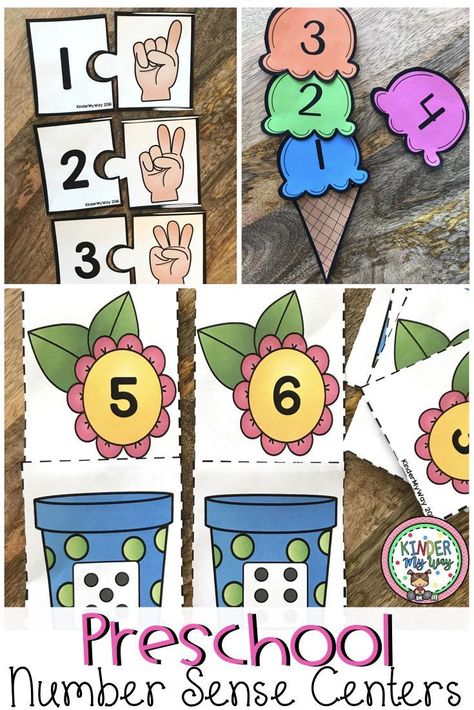 Here are some simple ideas to get you started, and they don’t require any kind of prep, either!
Here are some simple ideas to get you started, and they don’t require any kind of prep, either!
- Count stairs as you walk them.
- Count snacks on your plate.
- Count things in the car, like stop signs or bus stops.
- Count toys as they are put away.
Additionally, you will enjoy these free counting printables for preschoolers. They feature working those 1:1 correspondence skills while counting to ten or counting to twenty, even.
Number Sense Skill – Cardinality
Cardinality is the ability to count each object individually and correctly declare how many items there are in a set. It’s recognizing that the last number said when counting is the number of total objects in the group.
And this is a big step in developing number sense skills in preschool.
During this stage, students may begin to recognize patterns such as the five-frame and know how many objects are in sight without having count them. Remember, this also falls under quantification skills, and is called subtilizing.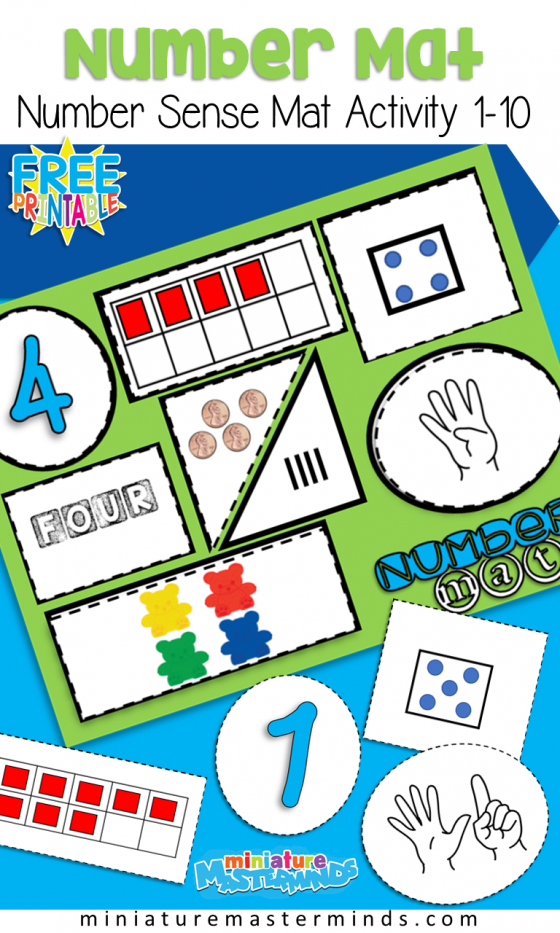 So, skill work in one to one correspondence also simultaneously develops subtilizing skills.
So, skill work in one to one correspondence also simultaneously develops subtilizing skills.
Number Sense Skill – Conservation of Number
Conservation of number shows that the child is able to understand that a number of objects remains the same even when rearranged. Objects can be in a straight line, or scatter all about. The quantity remains the same on matter the arrangement.
Conservation of number also includes the understanding that the quantity remains the same when the same objects are swapped out. For example, five cars is the same as five crayons because the quantity of five remains the same. (This plays into one to one correspondence as well.)
Number Sense Skills – Composing and Decomposing Numbers
Decomposing and composing numbers, in short, is the ability to break apart a given number and put it back together again. Simply put, it’s basic subtraction and addition skills.
Composing numbers is taking two parts and adding them together to make a whole.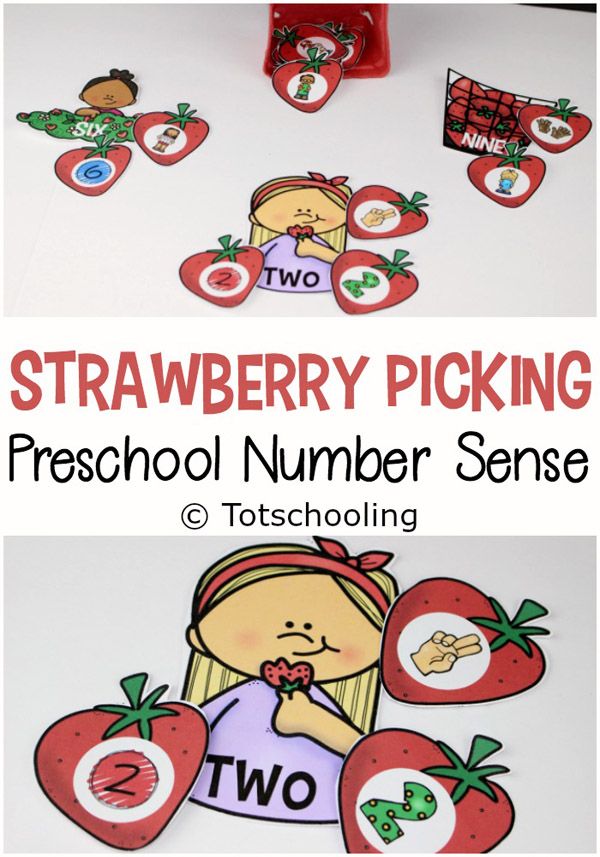 Decomposing numbers is taking a whole part and breaking it into parts.
Decomposing numbers is taking a whole part and breaking it into parts.
Addition and subtraction skills can easily be introduced in preschool with practice in composing and decomposing numbers. During preschool, little, if any, mathematical symbols are used.
Here are some practical learning activities and math games to practice addition and subtraction skills with your preschooler.
Ten frames are a great tool!- Make number quantities on five and ten frames. Start with a smaller number, and fill in the five or ten frame to complete the number.
- Count snacks. Give your preschooler a few crackers, for example, and then tell them to take a few more until they reach a certain number.
- Do the above activity in reverse by asking your preschooler to split the total number of crackers between two children.
- Use music! This is one of our favorite YouTube videos about composing numbers.
Addition and Subtraction Activities for Preschoolers
A Word to the Wise About Teaching Number Sense in Preschool
If you’ve read the last 1,700 words of this guide, you may have more questions. Remember, teaching number sense to preschoolers is an incremental process, so don’t feel overwhelmed.
It’s like weight lifting.
If you want to build muscle and strength, you need what is called “gradual progression of overload”. This simply means that over time, you gradually add more weight because your body has mastered lighter sets.
In a way, the same is true for teaching number sense. As preschoolers master different skills in number sense, we can add a little more difficulty, or add completely new skill that feeds off the old one.
Take Out the Guesswork!
This Preschool Math Curriculum is designed to teach your preschooler all five disciplines of math without the boring worksheets!
Including nine individual math units, the Preschool Math Curriculum is systematically designed.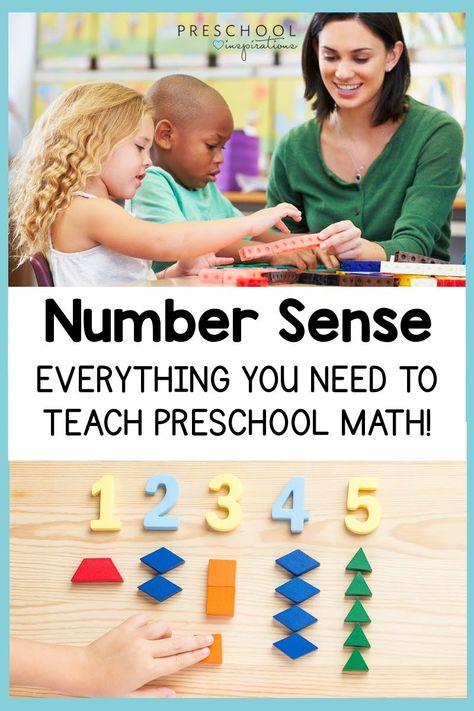 No need to wonder how to approach preschool math, this curriculum lays it out for you but is flexible enough to be tweaked for the needs of your students.
No need to wonder how to approach preschool math, this curriculum lays it out for you but is flexible enough to be tweaked for the needs of your students.
Included are 36 complete weeks (soon to be 40 weeks) of math instruction, featuring over 325 new and unique hands-on activities. And, that doesn’t even include the 72 printable and reusable centers to support a play-based instructional approach.
Sarah Punkoney, MAT
I’m Sarah, an educator turned stay-at-home-mama of five! I’m the owner and creator of Stay At Home Educator, a website about intentional teaching and purposeful learning in the early childhood years. I’ve taught a range of levels, from preschool to college and a little bit of everything in between. Right now my focus is teaching my children and running a preschool from my home. Credentials include: Bachelors in Art, Masters in Curriculum and Instruction.
stayathomeeducator.com/
How number sense affects math learning
You may have heard the term number sense in the context of mathematics, but what does it really mean and how does it apply to children who are bad at math? Find out which skills affect number sense and how to help your child develop them.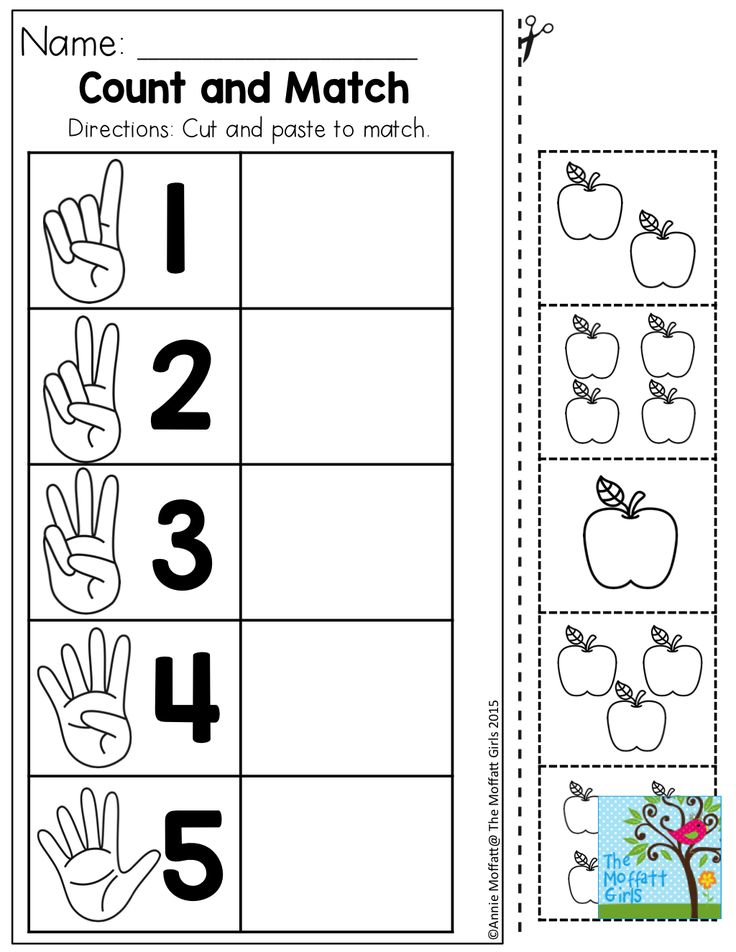
What number sense really means
What people sometimes call number sense is actually a set of skills that allow you to work with numbers. This includes abilities:
-
Understand quantity.
-
Understand concepts such as "more" and "less" in the contexts of quantity and size.
-
Understand the relationship between one object and a group of objects (for example, "seven" means one group of seven objects).
-
Understand the symbols that represent quantities (for example, 7 means "seven").
-
Compare numbers (for example, 12 is greater than 10 and 4 is half of 8).
-
Understand the sequence of numbers in a list: 1st, 2nd, 3rd, etc.
Some people have a better sense of numbers than others. Children diagnosed with dyscalculia often lack these basic skills. This can interfere both in school and in everyday situations.
How Number Sense is Used to Learn Math
Math requires children to manipulate numbers in addition, subtraction, multiplication, and division, all of which require strong number sense skills.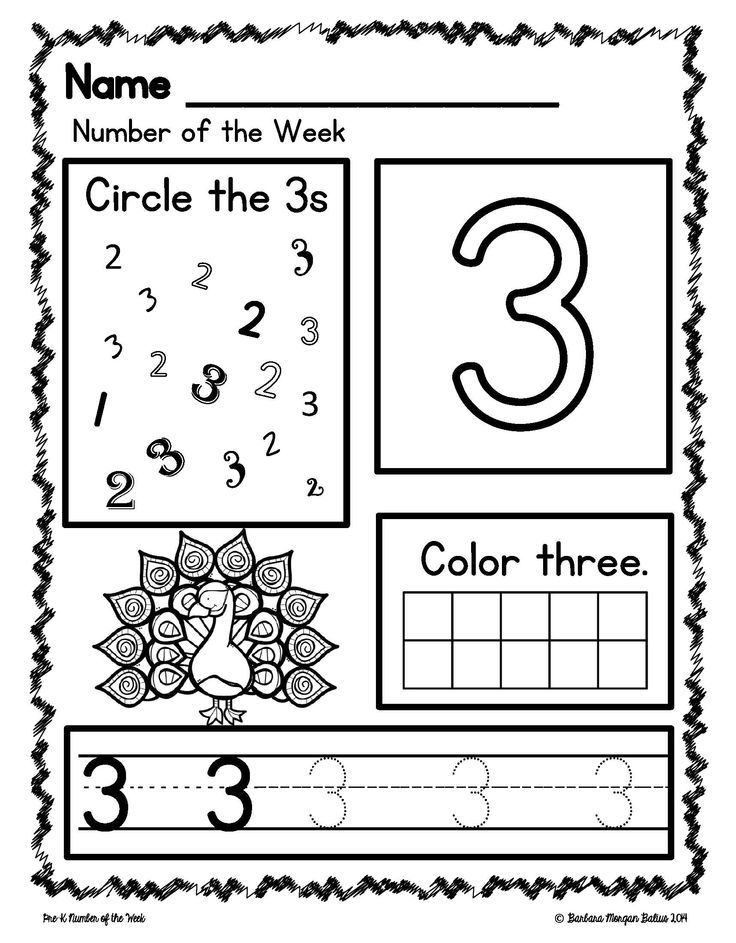 Children who are well developed in these skills can quickly compare groups of objects and determine which group is larger and which is smaller. They understand what it means when the number of objects in a group increases or decreases, and they understand how to assemble groups and break them down into smaller pieces. They also understand that characters (numbers) can be represented by objects. For example, when they see a bunch of seven beads, they understand that this number is 7.
Children who are well developed in these skills can quickly compare groups of objects and determine which group is larger and which is smaller. They understand what it means when the number of objects in a group increases or decreases, and they understand how to assemble groups and break them down into smaller pieces. They also understand that characters (numbers) can be represented by objects. For example, when they see a bunch of seven beads, they understand that this number is 7.
Difficulties with calculations
If your child has poor number sense skills, they may have difficulty even with simple math equations. For example, it may not understand the meaning of adding or subtracting objects from a group.
Let's remember our bunch of seven beads. If you remove two beads, the child may not realize that the number of beads has decreased. He may not realize that by subtracting two beads, a group of seven became a group of five.
In the same way, if you add three beads to the pile, he may not realize that the number of beads has increased.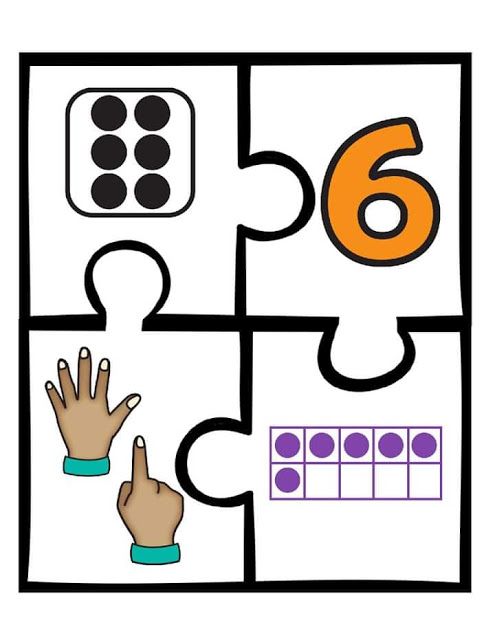 And he may not realize that by adding three beads, a group of seven became a group of ten.
And he may not realize that by adding three beads, a group of seven became a group of ten.
Due to poor number sense skills, the child may also not be given multiplication. He may not realize that it is easier to combine objects from several groups by multiplying them rather than adding them. Also, this weakness can affect its ability to divide. The child may not realize that division is the easiest way to break groups down into their component parts.
-
Some people use the term "number sense" to describe a group of key skills in mathematics.
-
Children who do not do well in math (especially children diagnosed with dyscalculia) often have poor development of these skills.
-
Over time, number sense skills can be developed and strengthened.
Number sense is determined by environment, not genes – News – IQ: Research and Education Portal – Higher School of Economics National Research University
Number sense is an evolutionary ability inherent in humans and animals.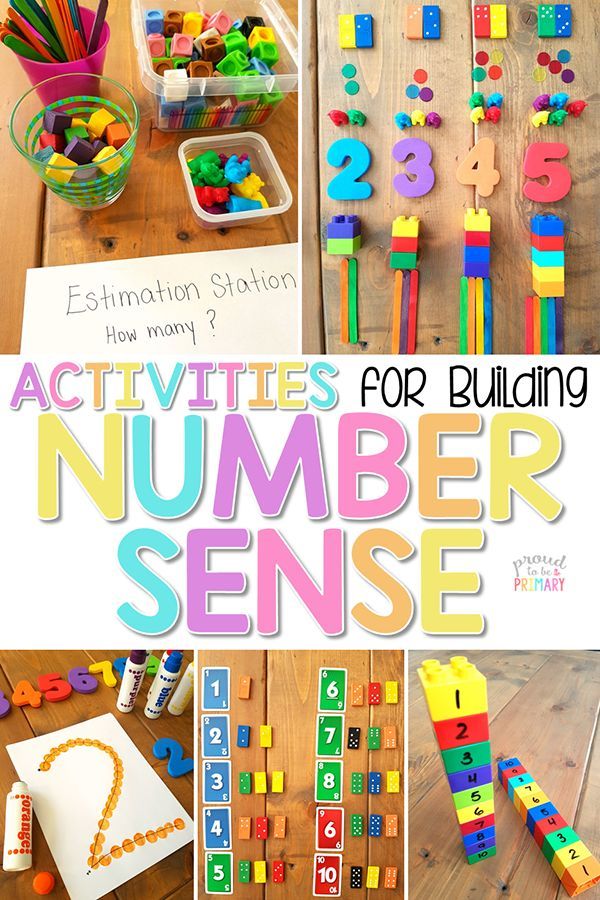 It is equally developed in both urbanized societies and representatives of nationalities who do not know double-digit numbers. Recent studies confirm that individual differences in the accuracy of the number sense depend little on genetic factors. The report on this was presented by the Director of the International Laboratory of Goldsmiths College of the University of London and the Head of the Laboratory of Cognitive Research and Psychogenetics of Tomsk State University Yuliya Kovas
It is equally developed in both urbanized societies and representatives of nationalities who do not know double-digit numbers. Recent studies confirm that individual differences in the accuracy of the number sense depend little on genetic factors. The report on this was presented by the Director of the International Laboratory of Goldsmiths College of the University of London and the Head of the Laboratory of Cognitive Research and Psychogenetics of Tomsk State University Yuliya Kovas
Number sense is a person's innate survival-related ability to determine an approximate measure or quantity by eye, ear and weight. This ability is not yet sufficiently studied by science. In particular, scientists are concerned about the extent to which the sense of number is related to heredity, and how it correlates with mathematical abilities. That is, for example, if a person is a mathematical genius, does this mean that he is superior to other people in the sense of number?
A special study in the UK was devoted to these topics.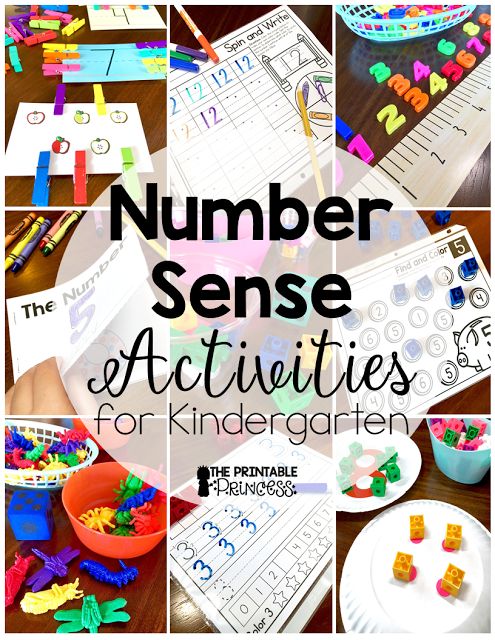 Project Manager Julia Kovas presented the results in the report "The Nature of Individual Differences in Number Sense and Mathematical Ability" as part of the HSE Cognitive Research Seminar.
Project Manager Julia Kovas presented the results in the report "The Nature of Individual Differences in Number Sense and Mathematical Ability" as part of the HSE Cognitive Research Seminar.
The project analyzed tests performed by 16-year-old twins participating in the UK Twins Early Development Study (TwinsEarlyDevelopmentStudy, TEDS) . The study included data from 837 pairs of monozygotic and 1422 pairs of dizygotic twins. The results showed that both monozygotic and dizygotic couples are only moderately similar in number sense. In addition, the researchers concluded that there is no difference in the development of the level of number sense in men and women.
The mysterious ability to guess the number
In everyday life, a person does not think about the fact that he has a special ability to sense the number, because it is taken for granted. “We enter the airport building and can determine by eye how many people there are in the zone of visibility available to us.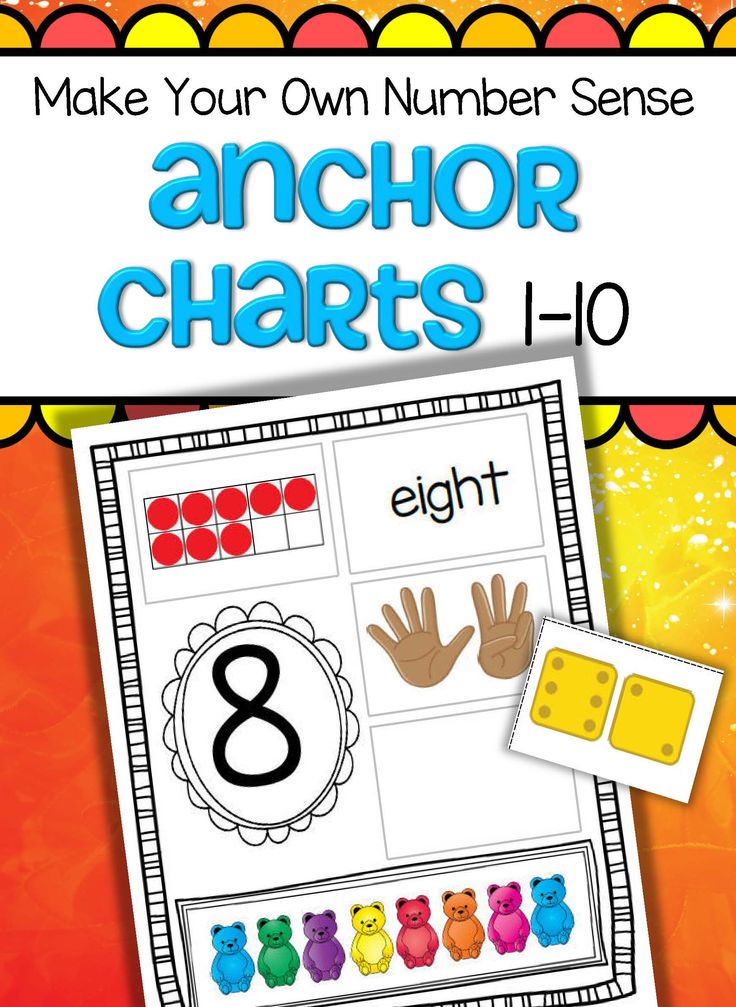 Everyone can guess how many people are in the audience right now,” Kovas noted during the presentation of her report. Picking up an object, a person is able to determine its approximate weight or catch by ear how many blows sounded in a certain period of time. Animals also have the ability to sense a number. And this is understandable from an evolutionary point of view. Animals, like people in the early stages of their development, in order to survive, had to understand where there are more resources for food, and where the greatest danger comes from.
Everyone can guess how many people are in the audience right now,” Kovas noted during the presentation of her report. Picking up an object, a person is able to determine its approximate weight or catch by ear how many blows sounded in a certain period of time. Animals also have the ability to sense a number. And this is understandable from an evolutionary point of view. Animals, like people in the early stages of their development, in order to survive, had to understand where there are more resources for food, and where the greatest danger comes from.
Studies show that babies have a sense of number. Scientists have been experimenting to see if babies can tell the difference between fewer and more dots on a screen. The results confirmed that babies as young as a few months old are able to distinguish between more and fewer dots when the difference is quite large (eg 1:2). The sense of number develops in a person with age and reaches a peak by the age of 30, remaining at this level almost all his life.
The level of education and literacy does not affect the development of a sense of number. According to Kovas, scientists have studied one of the tribes of the Amazon (Munduruku), whose representatives were isolated from civilization quite recently. Children from this tribe did not go to school. And the local language has words for just five numbers. To indicate a larger number, the representatives of the tribe use the word "many". But studies have shown that their sense of number is developed to the same extent as the average representative of Western countries.
A gift from nature, not from parents
Nevertheless, since the sense of number is associated with numbers and, accordingly, with mathematics, it is logical to assume that there may be a relationship between the level of development of the sense of number and mathematical abilities.
In the course of the study, the authors set the task of answering two questions. The first is why some people can quantify more accurately than others - what influences the development of a sense of number more - genetics or environment.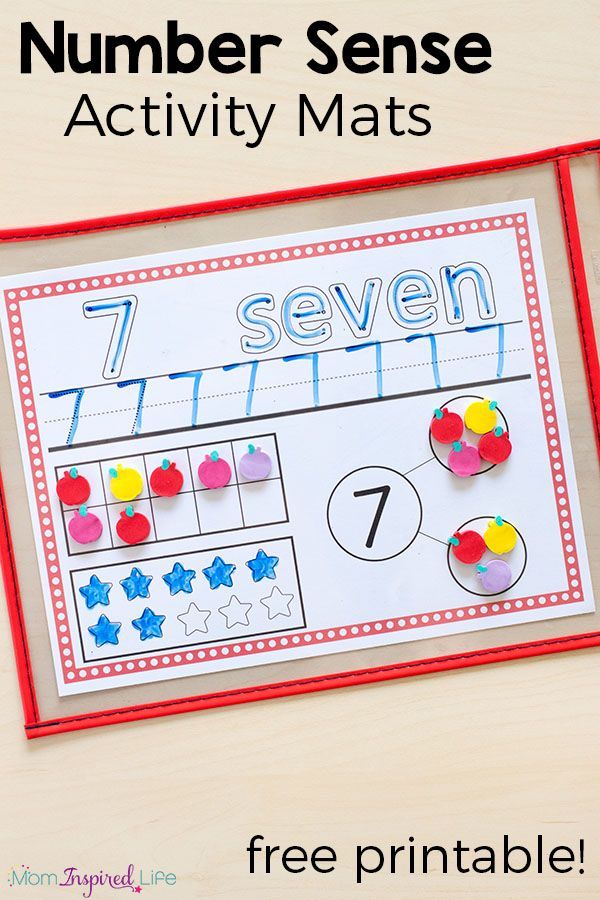 The second relates directly to mathematics - how much the sense of number is connected with mathematical abilities.
The second relates directly to mathematics - how much the sense of number is connected with mathematical abilities.
Exploring this area, according to Kovas, was not easy enough. Firstly, genetics still largely remains an unexplored area, and secondly, in order to obtain convincing conclusions, it is important to have the results of studies of children of different ages.
However, during the work on the project it was possible to confirm that the influence of genes on the level of development of the sense of number is secondary. Monozygotic twins have 100% genetic similarity, dizygotic twins share 50% of variable genetic factors. However, both of them showed similar differences in the sense of number, which cannot be said about the ability for mathematics. Mathematical ability of people is 60% determined by genetic factors, at least in many studied populations.
Research has shown that number sense and mathematical ability are only moderately related, and the causal direction of this relationship remains uncertain.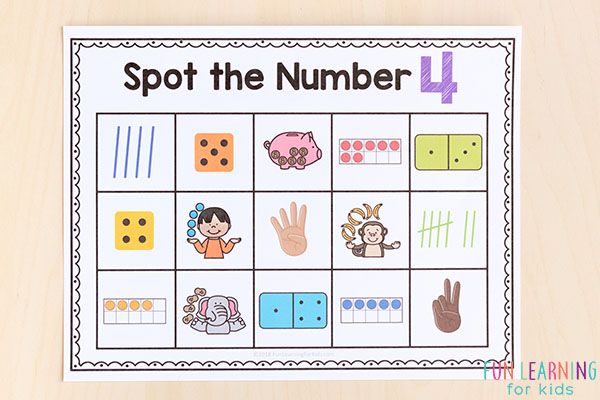 In addition, unlike mathematical talents, the sense of number is equally developed in both boys and girls. It is known that at different ages, boys and girls differ in their ability to do mathematics. Girls outperform boys at younger ages, but may lag behind at older ages. Such features do not apply to the sense of number.
In addition, unlike mathematical talents, the sense of number is equally developed in both boys and girls. It is known that at different ages, boys and girls differ in their ability to do mathematics. Girls outperform boys at younger ages, but may lag behind at older ages. Such features do not apply to the sense of number.
Research results show that individual environmental factors have a greater influence on the sense of number than genetic ones, which can be explained by evolutionary development. Nature equally endowed people with the ability to sense the number and takes care of its preservation.
The results of the study, according to Kovas, represent the first step towards understanding the nature of the sense of number and its relationship with the mathematical abilities of people. The study will be continued, including within the framework of the Russian Twin School Registry (RSBR), which was launched in Russia two years ago.
See also:
Why do we differ in number sense? Evidence from a genetically sensitive investigation.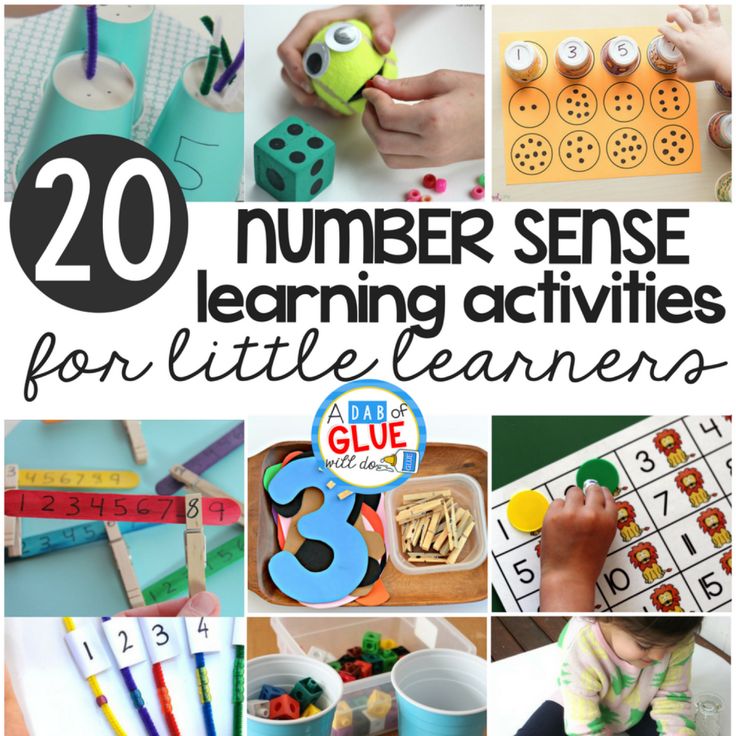
Learn more

